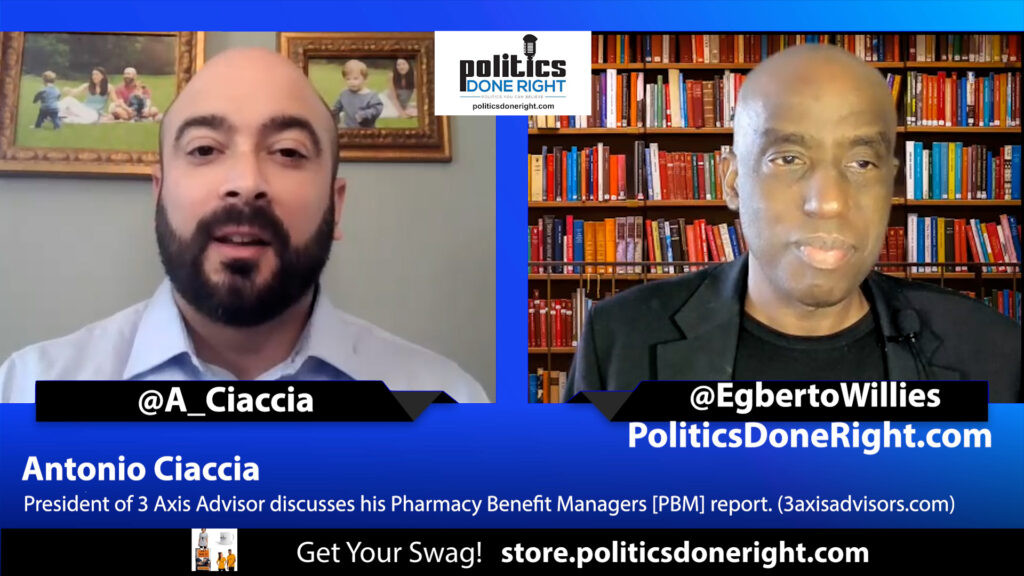Antonio Ciaccia exposes Pharmacy Benefit Managers (PBMs) and their drug pricing complicity. My question is, should PBMs even exist?
Antonio Ciaccia speaks
Antonio Ciaccia, President of 3 Axis Advisors led government affairs for the Ohio Pharmacists Association, a trade organization with a strong track record of advocating for drug pricing transparency. Antonio has since spent years studying the pharmacy marketplace, publishing several analyses on the drug pricing code, and pulling the rug out from what he believes is one of the most dysfunctional marketplaces in the world.
Consumers face an unfair disadvantage at their local pharmacy counter, with many paying more than they should for their needed medications due to the business practices of little-known companies in the drug supply chain called Pharmacy Benefit Managers (PBMs). The PBM Accountability Project released a report in early December 2021 based on research conducted in collaboration with data analysis firm, 3 Axis Advisors, which identifies the ways PBMs take advantage of the healthcare system to increase revenues.
If you have health insurance, whether it be through Medicare, Medicaid, or private insurance, chances are it’s managed by a PBM. They act as middlemen between drug manufacturers and patients’ health plans, negotiating savings on prescription medicines and determining which drugs will be covered by insurance. However, PBMs fail to pass savings to the patients and insurance companies, while undermining the possibility for competition that would drive value and savings for consumers. This drives up the cost of prescription drugs, leaving you to pay more out of pocket.
“With PBMs essentially centered at the core of the U.S. drug supply chain, it begs for scrutiny of how their business practices may exacerbate drug pricing dysfunction and excess,” said Mr. Ciacias. “As PBMs claim to be the only entity working to control drug prices, we believe that analyses like this report can shed light on the incentives and opportunities PBMs have to inflate costs rather than provide savings to plan sponsors and patients.”
Watch the entire episode here.
